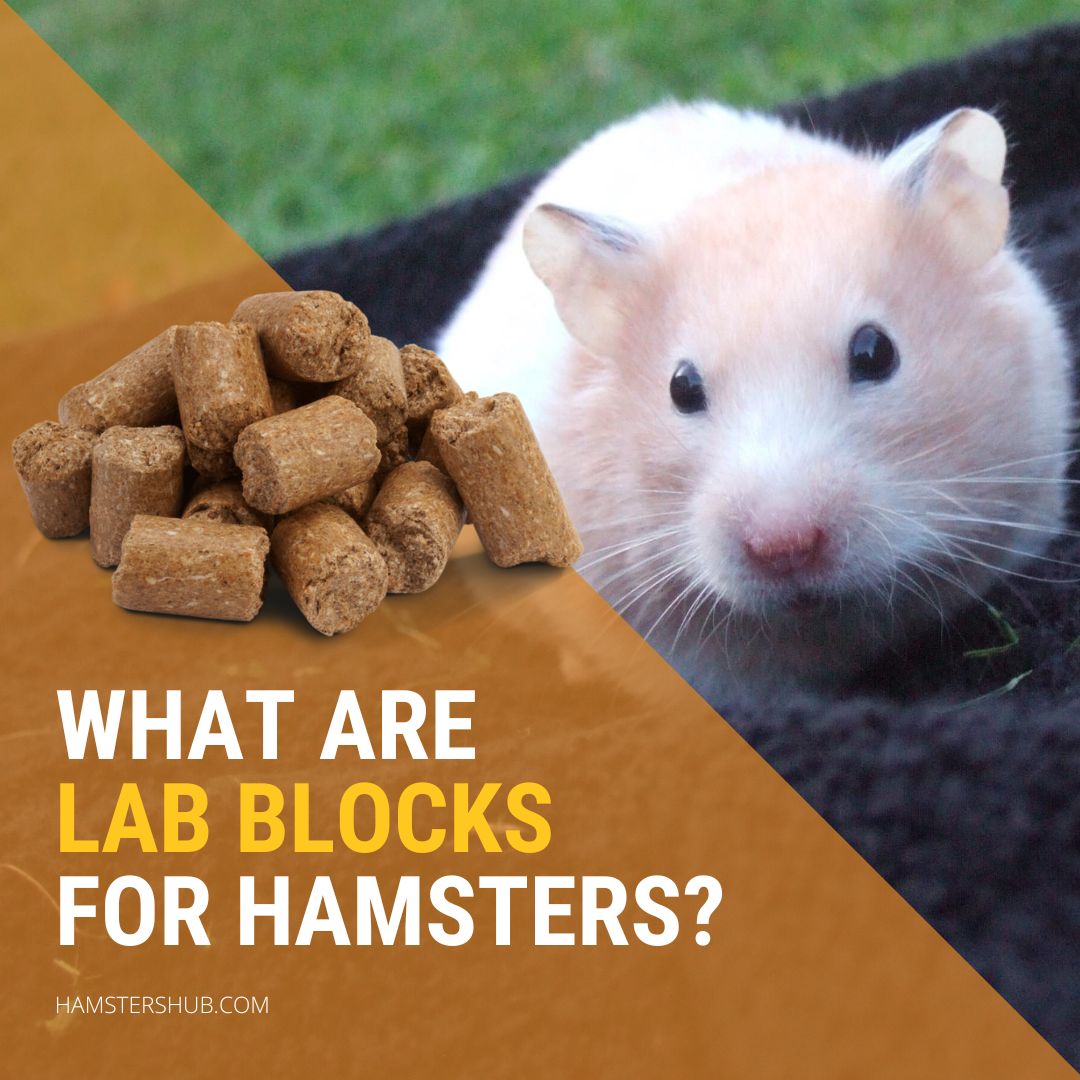If you own a hamster, then I’m sure you have heard about Lab Block food for hamsters.
Nowadays, most hamster owners serve this food to their hamsters. But, a lot of information is not publicly available about this.
Thus people often ask in our group about the quantity, the right way to serve this food, and more. And that’s why I’m going to tell you everything about Lab Block for your hamster in this post.
So, What Are Lab Blocks For Hamsters?
Basically, Lab Blocks are formulated food for rats, mice, hamsters, or any rodent, specially made for laboratories to provide all the essential nutrients that hamsters or other rodents need to maintain a healthy life. The Lab Block is a good source of vital nutrients like Protein, Fiber, Fat, and others.
Hamster owners usually serve Lab Blocks to ensure their hamsters get enough nutrients because the commercial seed mix might not provide enough.
I’ve discussed this topic in detail, so let’s scroll down and learn essential information!
How Are Lab Blocks Made & What Ingredients Does It Have?
The meaning of “Lab Block” is Lab – laboratories and Block because it comes in various sizes. So it is a formulated food specially made for lab purposes to provide essential nutrients.
There are different formulas for making this Lab Block; suppose a hamster needs more protein or fat, then extra protein or fat can be added to the formula to make the lab block more protein or fat-rich.
Similarly, the percentage of nutrients can be decreased accordingly. If you’re a hamster owner, you can purchase customized formulas according to your hamster’s needs. Various brands offer different formulas.
Now, what are the ingredients?
Lab Blocks are made with various protein and fiber-rich items like Corn, Soybean Meal, Wheat, Oats, Flaxseed, Dried Yeast, and more good vitamins and mineral sources.
Here is the ingredients list of a popular Lab Block from Mazuri; you can check all the ingredients here.
Thus, it provides your hamster with complete nutrients and keeps them healthy.
Why Do Hamster Owners Serve Lab Block To Hamsters?
Hamster Owners mainly serve their hamster seed mix as the staple diet, but few seed mixes fulfill the nutrient requirements of hamsters, especially Protein, Fat, and Fiber. Thus, many owners prefer to make a homemade seed mix but still mix lab block with the homemade mix.
The Lab Block is a great source of high protein, fiber, and low fat; it provides hamsters with the necessary dietary needs to maintain a healthy life, whereas seed mix often fails to provide the essential nutrients. Hence, most hamster owners prefer to serve Lab Block as a staple diet or with the seed mix.
As lab blocks are filled with proteins, it increases the overall nutrient value of your hamsters’ seed mix.
In Europe, few seed mixes fulfill hamsters’ protein, fat, and fiber requirements, so if you’re from Europe, it is good news, but before buying, you must check the number of nutrients. If you don’t know the hamsters’ nutrient requirements, read here.
Aside from a nutrient perspective, there are also a few other benefits of serving Lab Blocks to your hamsters. They are;

#Benefits of Lab Blocks
- First of all, as mentioned, it fulfills your hamster’s protein, fiber, and fat requirements.
- Lab Blocks also help hamsters’ teeth, as hamsters have overgrown teeth problems.
- No to little wastage.
- No issue of selective eating. Ofen hamsters become picky eaters with lots of varieties. Thus they only eat what they like. But there is no risk if you serve only the lab block.
- Cleaner and easy way of feeding
#Drawbacks of Lab Blocks
- Lab blocks are quite expensive.
- No varieties: Hamsters like varieties, so if you only serve lab block, they don’t get a lot of varieties. Thus most owners mix lab blocks with the main seed mix.
How Many Lab Blocks Should You Feed To A Hamster?
The serving amount of lab blocks depends on how you serve lab blocks to your hamsters, meaning if you serve lab blocks to your hamster as the main staple diet, then you have to serve 5-8 lab blocks. Whereas if you mix lab block with seed mix, then 1-2 lab blocks are enough.
Most hamster owners serve lab blocks with seed mix, and it is also recommended because hamsters only live a few years, so serving a lot of various food is a great idea rather than only lab blocks.
Many owners also use it as a supplement; a powdered version of the lab block can be used as a supplement. But, the best way is to serve with seed mix.
- Young hamster – 1 lab block with seed mix
- Adult – old hamsters – 1 or 2 lab blocks with seed mix
Avoid lab blocks with extra added sugar, especially if you have a dwarf hamster.
My Hamster is Not Eating Lab Block! What To Do?
Mostly, when you serve lab block with hamsters’ seed mixes, they often become picky eaters and only eat what they love. Thus, they might not get complete nutrients from their diet, resulting in an unhealthy hamster.
But that is not the only reason; there might be a different reason your hamster is not eating lab block. Here I’ve discussed a few possible ways you can try to make your hamster eat lab blocks. Let’s see;
Break Lab Block into small pieces – If you serve the whole big piece of lab blocks, then please note often, hamsters don’t eat big pieces of Lab Block, especially dwarf hamsters, as they are the smallest. So always break lab blocks into small pieces and serve them to your hamster.
Try a different Lab Block brand – I’ve noticed many hamsters don’t like to eat one of the famous lab blocks, which is Mazuri’s Lab Block, maybe because of the flavor.
Thus if your hamster is not eating a certain brand, you can try another best one. Here is a best Lab Block with all the required ingredients, and it is the favorite of many hamster owners; check the Envigo Lab Block on amazon.
Alternative Option – Still, if your hamster is not interested in eating lab block, the best option is to try alternatives like dried mealworms, eggs, or chicken [frequently] and others, to ensure they get enough nutrients.
Also, make sure you don’t cross 23% of the daily protein limit for adult hamsters and 15% for elder hamsters.
Similar Articles:

